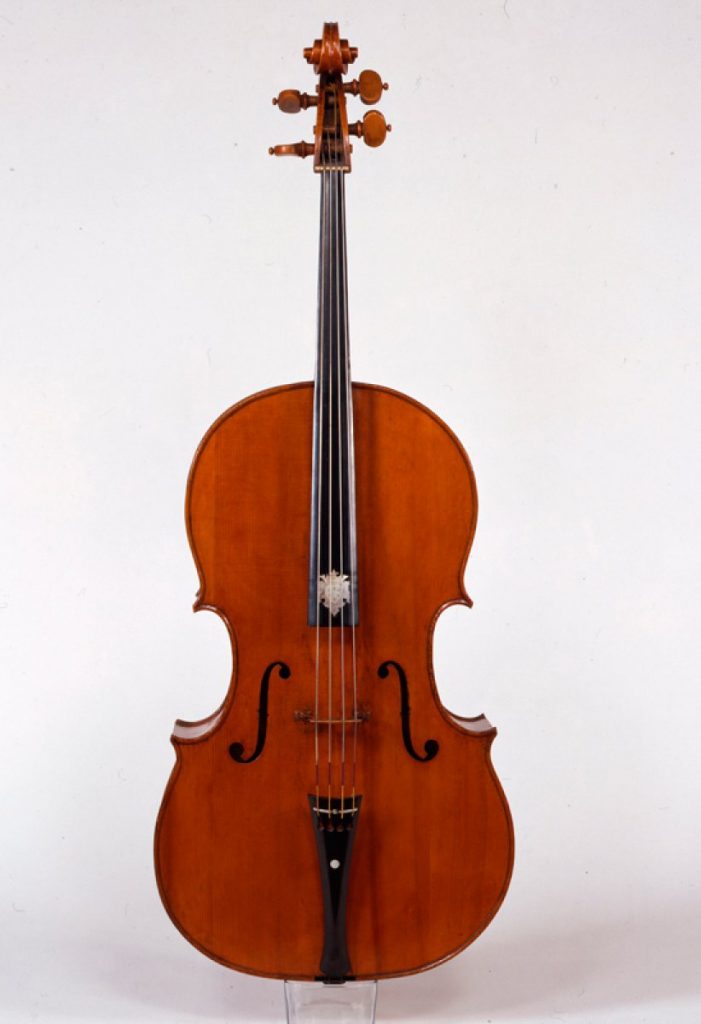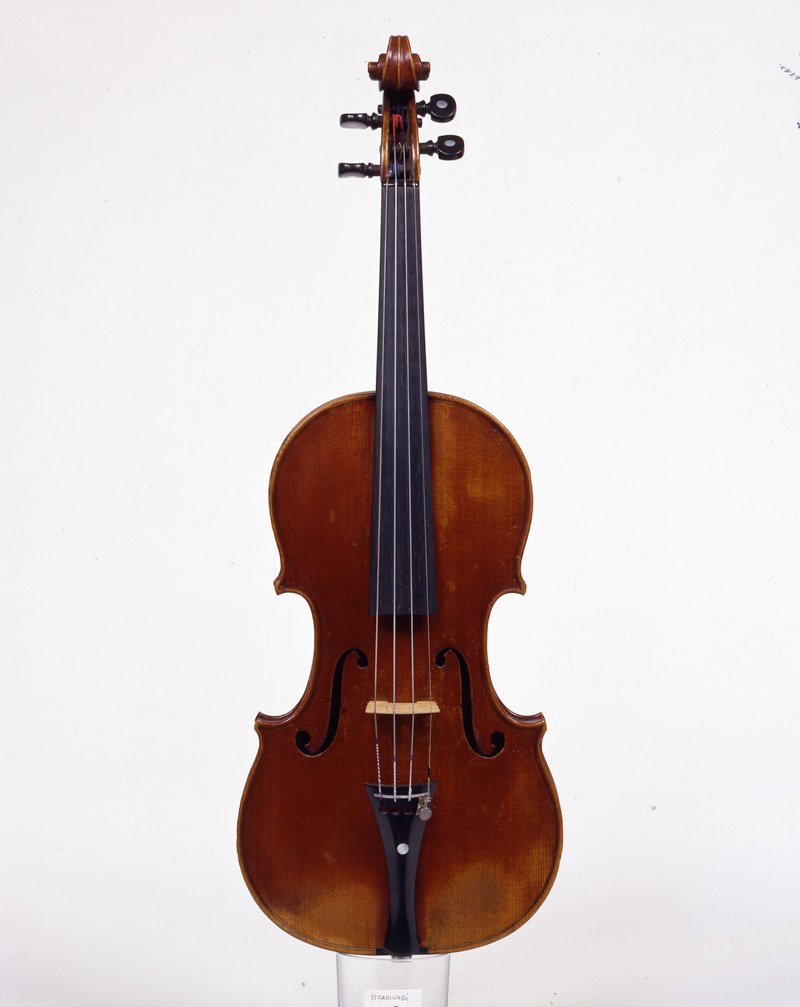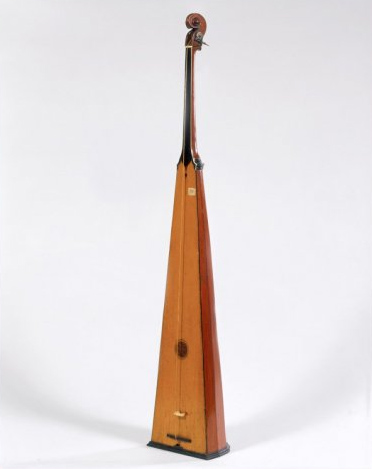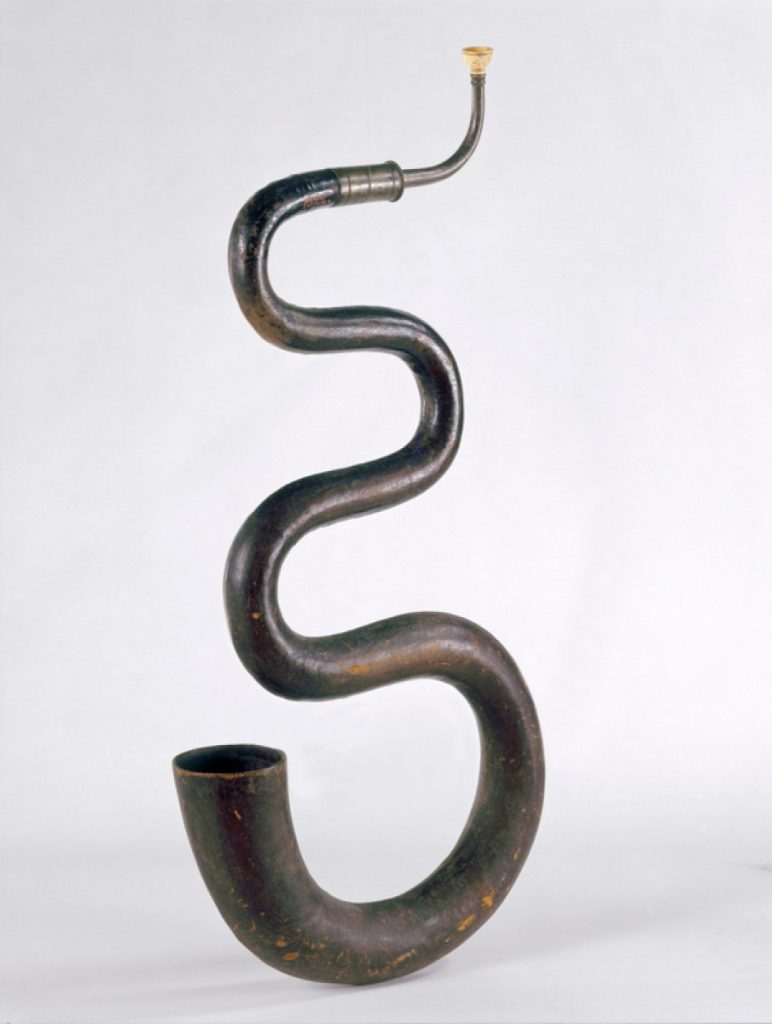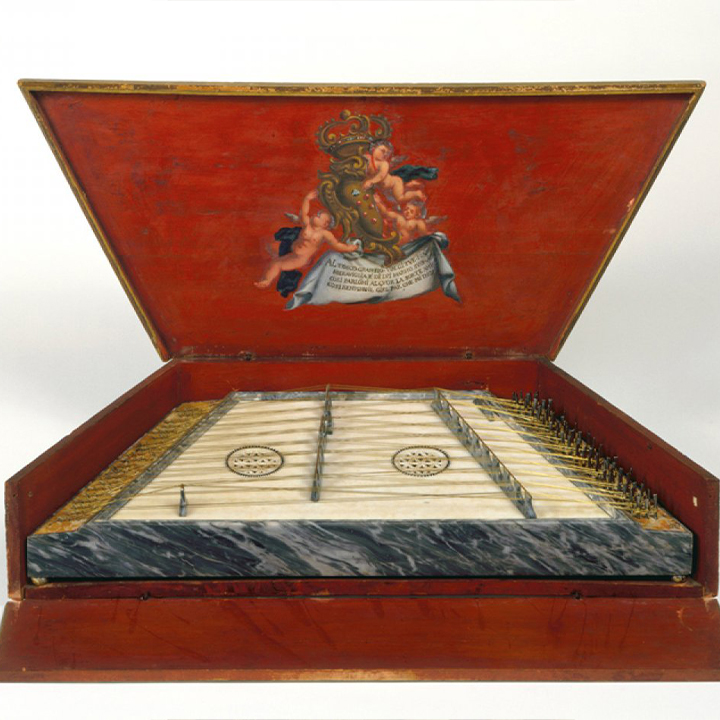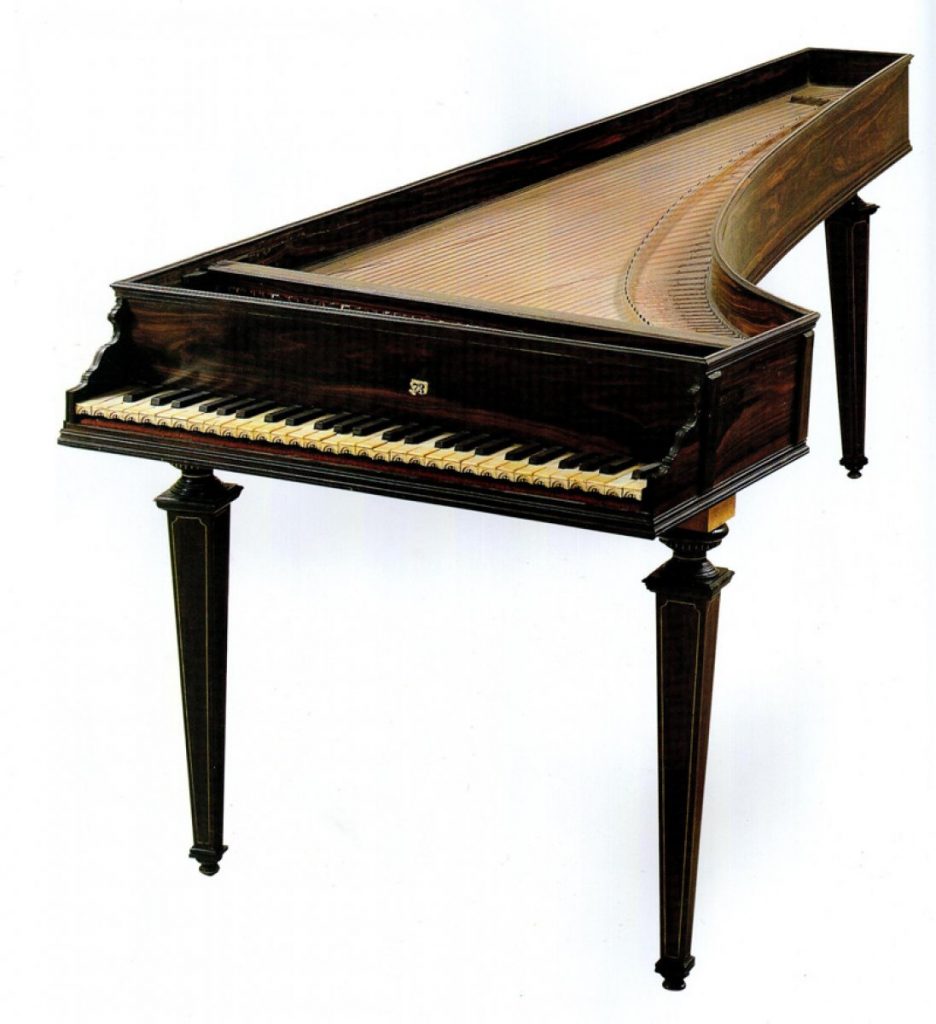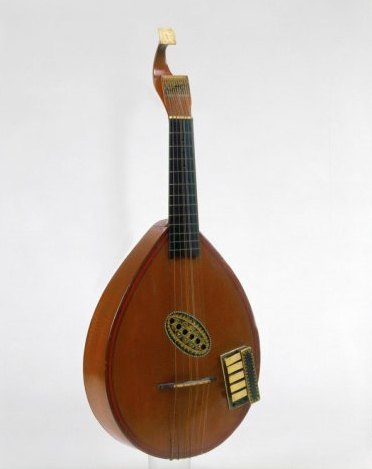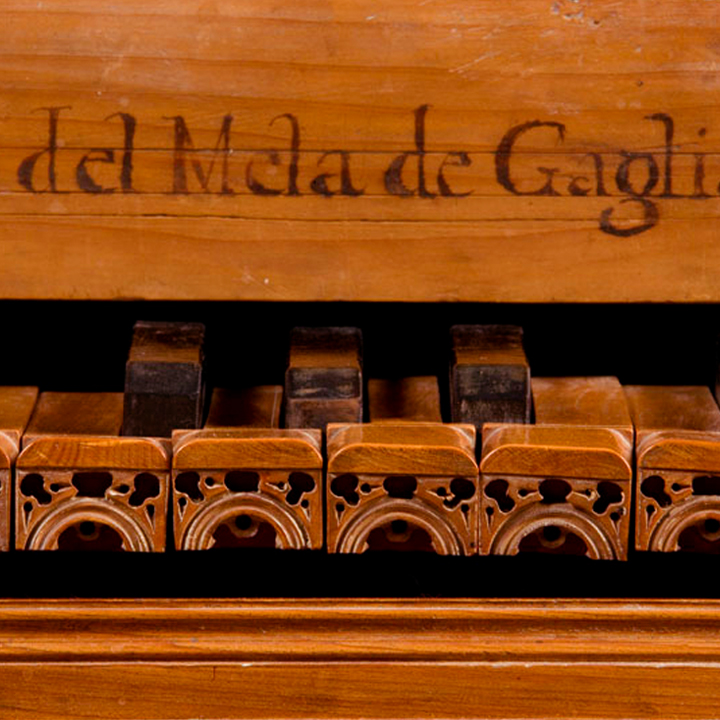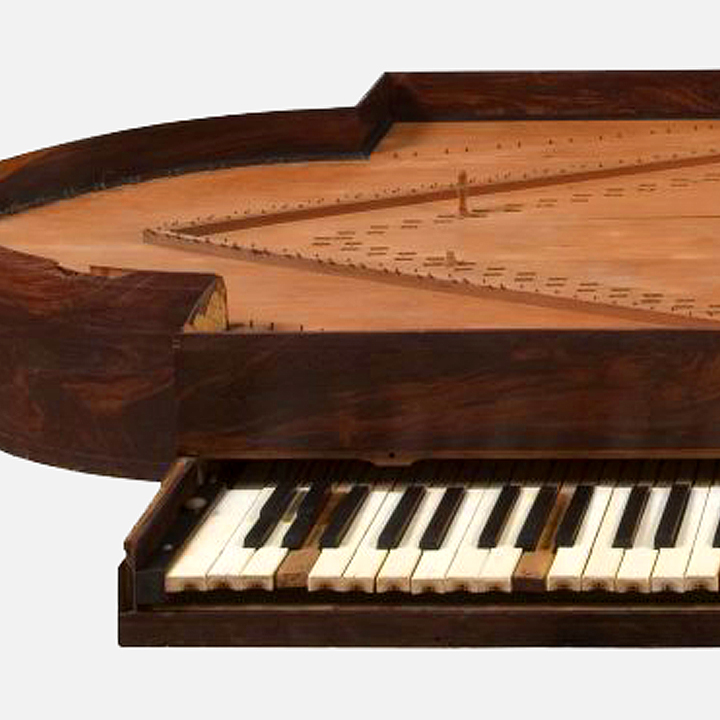Expressive harpsichord
Thomaso Culliford
Penzance, 1747 – London ?, 1821
MUSICAL INSTRUMENTS
Data sheet
- Author: Thomaso Culliford
- Date: 1785
- Collection: MUSICAL INSTRUMENTS
- Material: mahogany, maple and pear wood
- Inventory: Inv. Cherubini 1988/100
Artwork
This harpsichord, built in London by Thomas Culliford’s workshops for the firm Longman & Broderip, is one of the few surviving instruments that combine a single keyboard (rather than the usual two) with a series of ingenious devices that make the sound obtained from its string-plucking mechanism more ‘expressive’. In parallel with the increasing popularity of pianos, English instrument makers in the late 18th century endeavoured to achieve a hitherto impossible gradation in sound intensity from the harpsichord. A ‘shutter’ mechanism was devised for this purpose, consisting of a series of wooden slats that close the soundboard and that can be gradually opened by pressing the right pedal, thereby simulating a ‘crescendo’.
By pressing the left pedal, on the other hand, it was possible to gradually deactivate the various registers (that is, the number of strings that are plucked when each key is pressed), resulting in a progressively softer sound.

